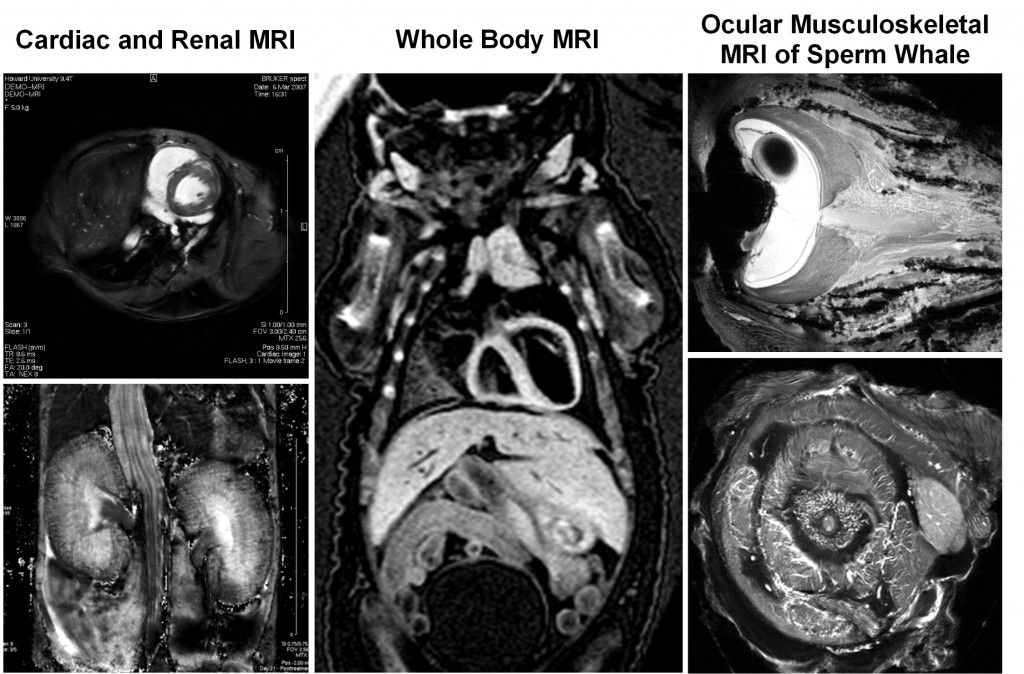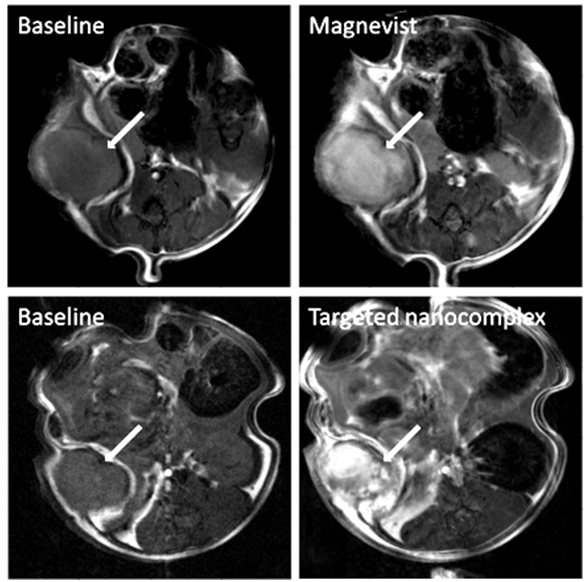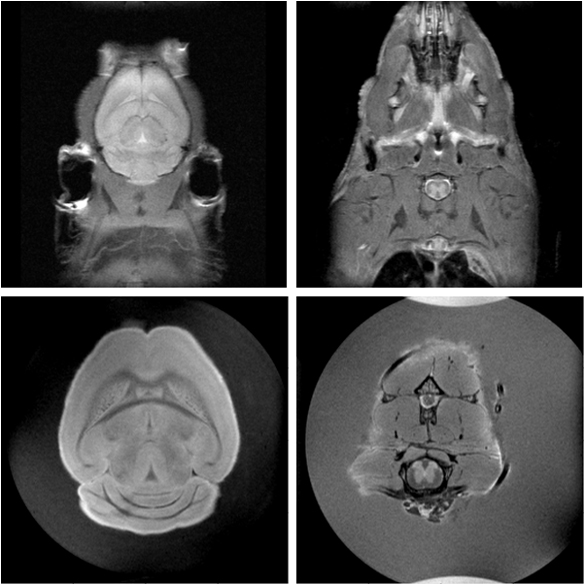MRI Facilities: Biomedical Imaging
The laboratory has two state-of-the-art NMR machines: a Bruker Avance III 7 Tesla (300 MHz), 21cm horizontal bore MRI/MRS system and a Bruker Avance 9.4 Tesla (400 MHz), 89 mm vertical bore MRI/MRS system. Both MRI/MRS systems are capable of performing MRI as well as spectroscopy studies. The NMR laboratory has acquisition workstations, a storage server and several workstations for spectroscopy data and image processing.
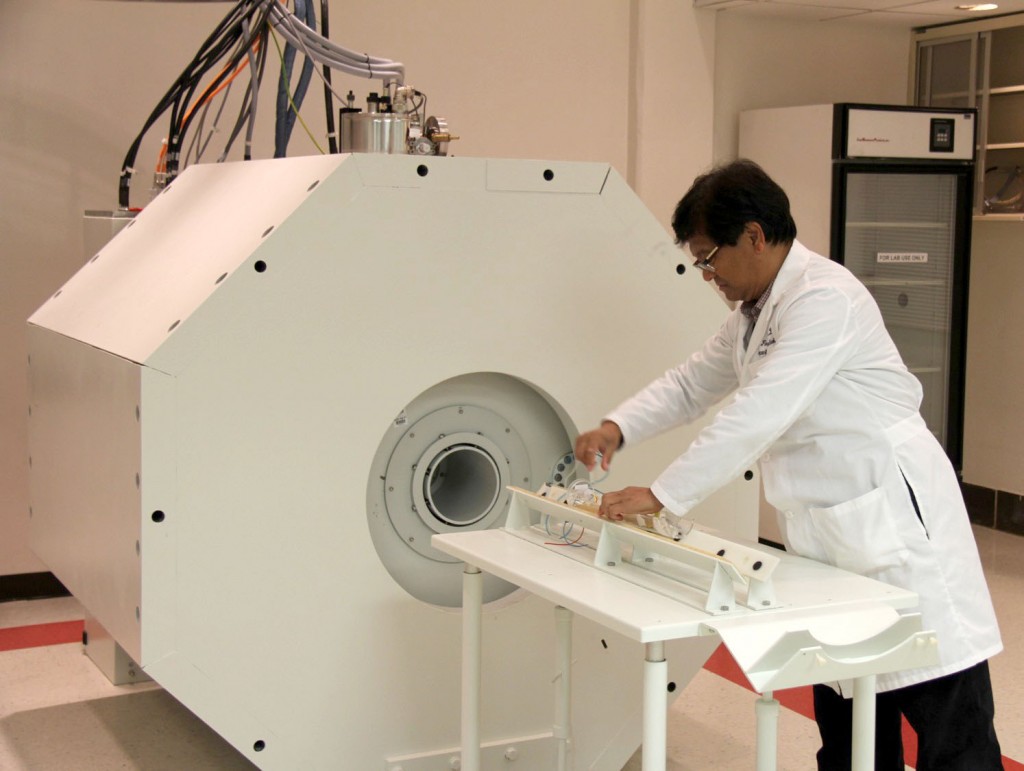
Bruker 7T MRI
- Bruker 7 Tesla (300MHz) MRI/MRS
- 210mm horizontal bore Magnex magnet, 112mm clear space
- RF Coils: Volume, surface, and custom-made coils
- AVANCE III Console, Paravision 6 (PV6) software
- Detectable nuclei: 1H
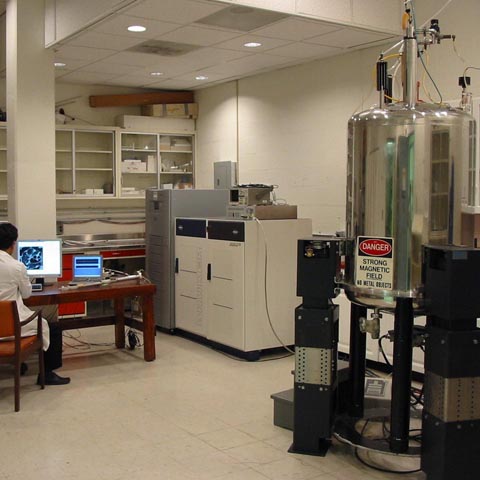
Bruker 9.4T MRI
- Bruker 9.4 Tesla (400MHz) MRI/MRS
- 89mm vetical bore Oxford magnet
- RF Coils: Volume, surface, and custom-made coils
- AVANCE 400 Console, Paravision 5.1 (PV5) software
- Detectable nuclei: 1H, 19F, 13C, 31P
Sample MRI Images
